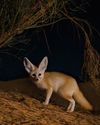Kill the cull?
BBC Wildlife
|May 2022
According to new research, the badger cull isn't working. We take a look at the science.

BY AUTUMN 2022, IT WILL be nine years since the then government initiated the Gloucestershire and Somerset.
Since then, culling has expanded to cover nearly 37,000km? of the south-west and west of England, and (not including figures from 2021) taken the lives of some 143,000 badgers at a cost to the public purse of £47 million.
If it carries on as planned, some campaigners opposed to culling have estimated that 280,000 badgers will be killed, perhaps three-quarters of the entire UK population.
And the result of this wholescale, licensed killing of a protected species? According to a new study, there has been no significant decrease in levels of bovine tuberculosis (bTB) in cattle that can be attributed to culling, the sole reason for embarking on this drastic course of action in the first place.
You might expect that new, peer-reviewed science, even in an area as controversial as badger culling, might help to draw the two sides of the debate together. While all three of the study's authors are high-profile opponents of the policy, it is also important to point out that the peer-review process involved four experts in epidemiology - the science of diseases and how they spread - evaluating and approving the paper.
But, if anything, the pros and antis are even more polarised. The Department for Environment, Food & Rural Affairs (Defra) said the authors had worked to "a clear campaign agenda”, “manipulated data” and that was it “disappointing to see [the research] published in a scientific journal.”
The biggest farming union, the NFU - which has consistently taken a pro-cull stance - reiterated figures from a previous, considerably smaller study that showed badger culling had reduced bTB rates in herds of cattle.
Denne historien er fra May 2022-utgaven av BBC Wildlife.
Abonner på Magzter GOLD for å få tilgang til tusenvis av kuraterte premiumhistorier og over 9000 magasiner og aviser.
Allerede abonnent? Logg på
FLERE HISTORIER FRA BBC Wildlife

BBC Wildlife
"I was terrified the elephant would ram us"
African elephant in Kenya
2 mins
January 2026

BBC Wildlife
ALL YOU EVER NEEDED TO KNOW ABOUT THE Fennec fox
THE FENNEC FOX IS THE SMALLEST fox in the world, with a body length that can be as little as 24cm.
3 mins
January 2026

BBC Wildlife
INTO THE PLASTISPHERE
A unique synthetic ecosystem is evolving in our oceans – welcome to the plastisphere
7 mins
January 2026

BBC Wildlife
“More than half of all animal life exists in a parasitic relationship, and all life lives in symbiosis”
Our survival depends on species evolving to live together - but some relationships take dark turns
7 mins
January 2026

BBC Wildlife
Are animals able to dream?
SLEEP IS A MYSTERIOUS THING. FOR A long time, we weren't sure why we do it.
1 mins
January 2026

BBC Wildlife
Does a cuckoo know it's a cuckoo?
ABSURD LITTLE BIRDS ACROSS THE world lay their eggs in the nests of other species, leaving the hapless parents to raise a changeling at the expense of their own offspring.
2 mins
January 2026

BBC Wildlife
Orcas killing young sharks
Juvenile great whites are easy prey for orca pod
1 mins
January 2026

BBC Wildlife
Ocean goes on tour
Acclaimed film touring the UK, backed by live orchestra and choir
1 min
January 2026

BBC Wildlife
Feisty bats hunt like lions
Winged mammals use a 'hang and wait' strategy to take down large prey
1 mins
January 2026

BBC Wildlife
SNAP-CHAT
Richard Birchett on magical merlins, wily coyotes and charging deer
2 mins
January 2026
Translate
Change font size

